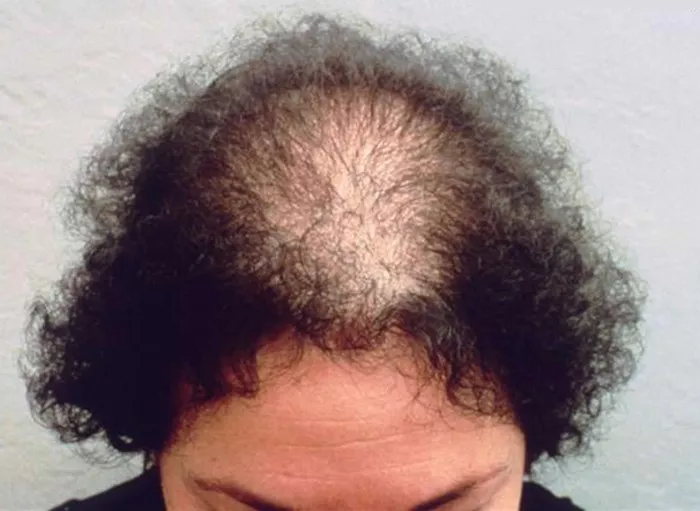Hair loss, particularly in the frontal area known as the hairline, can be a distressing experience for many individuals. Whether it’s due to genetics, hormonal changes, or other factors, losing hair along the hairline can impact one’s confidence and self-esteem. However, the good news is that there are several methods available today that can help stimulate hair regrowth in this area. In this comprehensive guide, we’ll explore various solutions and treatments for regrowing your hairline, from natural remedies to advanced medical interventions.
Understanding Hair Loss and Hairline Recession
Before delving into the solutions, it’s essential to understand the underlying causes of hair loss and hairline recession. Hair loss can occur due to a multitude of reasons, including genetics, hormonal imbalances, stress, nutritional deficiencies, and certain medical conditions such as alopecia areata or androgenetic alopecia (male or female pattern baldness). Hairline recession, specifically, is often associated with male pattern baldness, characterized by a receding hairline that forms an “M” shape.
Natural Remedies for Hairline Regrowth
Many individuals prefer to start with natural remedies before considering more invasive treatments. While scientific evidence supporting the effectiveness of these remedies may be limited, some people have reported positive results. Here are a few natural remedies to consider:
1. Essential Oils: Certain essential oils, such as rosemary oil, peppermint oil, and lavender oil, have been traditionally used to promote hair growth. These oils are believed to improve circulation to the scalp and stimulate hair follicles.
2. Scalp Massage: Massaging the scalp can increase blood flow to the hair follicles, potentially promoting hair growth. Use gentle circular motions with your fingertips to massage the scalp regularly.
3. Nutritional Supplements: Nutritional deficiencies can contribute to hair loss, so ensuring you have a balanced diet rich in essential vitamins and minerals is crucial. Supplements like biotin, vitamin D, and iron may support hair health.
4. Aloe Vera: Aloe vera has soothing properties and may help improve scalp health. Apply aloe vera gel directly to the scalp and leave it on for about 30 minutes before rinsing.
While these natural remedies may offer some benefits, results can vary, and they may not be effective for everyone. It’s essential to manage expectations and consider consulting with a healthcare professional for personalized advice.
Medical Treatments for Hairline Restoration
For individuals seeking more robust solutions to hairline regrowth, several medical treatments and procedures are available. These options are typically more effective but may come with associated risks and costs. Here are some medical interventions to consider:
1. Topical Treatments: Over-the-counter and prescription topical treatments, such as minoxidil (Rogaine), are commonly used to treat male and female pattern baldness. These solutions are applied directly to the scalp and may help stimulate hair growth.
2. Prescription Medications: Finasteride (Propecia) is an oral medication approved for the treatment of male pattern baldness. It works by reducing the production of dihydrotestosterone (DHT), a hormone that contributes to hair loss.
3. Platelet-Rich Plasma (PRP) Therapy: PRP therapy involves injecting the patient’s own platelet-rich plasma into the scalp to stimulate hair follicles’ growth. While more research is needed to confirm its efficacy, some studies suggest it may be a promising treatment for hair loss.
4. Hair Transplant Surgery: Hair transplant surgery involves relocating hair follicles from a donor site (usually the back or sides of the scalp) to the recipient site (the thinning or balding areas). This surgical procedure can provide permanent results but requires careful consideration and a skilled surgeon.
5. Low-Level Laser Therapy (LLLT): LLLT devices, such as laser combs or helmets, use low-level laser light to stimulate hair follicles and promote hair growth. While evidence supporting its effectiveness is mixed, some individuals may find it beneficial.
Lifestyle Changes for Hair Health
In addition to specific treatments, certain lifestyle changes can also support hair health and potentially aid in regrowing a receding hairline. Consider incorporating the following habits into your routine:
1. Manage Stress: Chronic stress can contribute to hair loss, so finding healthy ways to manage stress, such as exercise, meditation, or counseling, may help.
2. Protect Your Hair: Avoid hairstyles that pull on the hairline, such as tight ponytails or braids, and minimize heat styling and chemical treatments that can damage the hair.
3. Follow a Balanced Diet: A diet rich in protein, vitamins, and minerals is essential for maintaining healthy hair. Incorporate foods like lean meats, fish, fruits, vegetables, and whole grains into your meals.
4. Stay Hydrated: Proper hydration is vital for overall health, including the health of your hair. Drink plenty of water throughout the day to keep your body and scalp hydrated.
5. Avoid Smoking and Excessive Alcohol Consumption: Both smoking and excessive alcohol intake can negatively impact hair health and contribute to hair loss, so consider reducing or eliminating these habits.
Consultation with a Healthcare Professional
Before embarking on any hair regrowth treatment plan, it’s crucial to consult with a qualified healthcare professional, such as a dermatologist or a hair restoration specialist. They can assess your specific condition, medical history, and individual needs to recommend the most suitable course of action. Additionally, they can provide guidance on potential side effects, risks, and realistic expectations for treatment outcomes.
Conclusion
In conclusion, regrowing a receding hairline is possible with the right approach and treatment plan. Whether you opt for natural remedies, medical interventions, or a combination of both, patience and consistency are key. By addressing the underlying causes of hair loss, making lifestyle changes, and seeking professional guidance, you can take proactive steps toward restoring your hairline and regaining your confidence.


